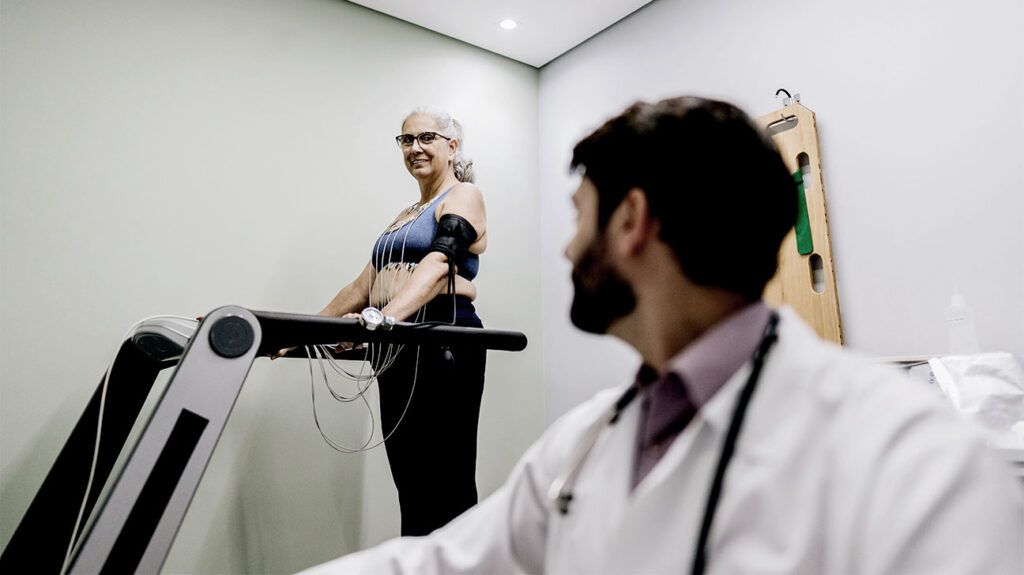Premature ventricular complexes (PVCs) are extra heartbeats originating from the heart’s lower chambers, potentially causing palpitations or fluttering sensations.
While occasional PVCs are common, frequent ones may indicate underlying issues.
Examples of causes and risk factors include taking stimulants, stress, and existing heart problems. Doctors typically use tests such as electrocardiograms to diagnose PVCs.
Treatment may include lifestyle adjustments, medications, or medical procedures.
This article explains ventricular premature complexes and their symptoms, causes and risk factors, treatment, and prevention.

PVCs, also known as ventricular premature complexes (VPCs), are extra heartbeats that start in the ventricles, the lower chambers of the heart that discharge blood.
VPCs are a type of arrhythmia and are
However, frequent PVCs can lead to changes in how the left ventricle functions and may require treatment.
Symptoms of VPCs can include:
- irregular heartbeats or heart palpitations, sometimes with atypical pulsations in the neck
- persistent fatigue or weakness
- dizziness or lightheadedness
- shortness of breath or labored breathing, which doctors call dyspnea
- chest pain or discomfort, known as angina
However, many people do not experience symptoms and are unaware of VPCs until a doctor discovers them during a routine physical exam or EKG.
Structural heart disease is a condition that affects the valves, chambers, walls, or overall structure of the heart. Examples of structural heart diseases include:
- congenital heart abnormalities
- aortic stenosis
- cardiomyopathy
- mitral valve prolapse
- myocardial infarction, or heart attack
However, some noncardiac health issues also may cause PVCs, including:
- hyperthyroidism
- anemia
- hypertension
- electrolyte imbalances such as hypomagnesemia
Along with the various cardiac and noncardiac health issues that can cause PVCs, other risk factors
- excessive caffeine consumption
- high levels of anxiety
- excessive catecholamines, which are the hormones responsible for the “fight-or-flight” response
- sleep deprivation
- alcohol, tobacco, and illicit drug use
Someone experiencing frequent PVCs may be at risk of complications affecting the heart’s ability to pump blood efficiently. These complications include left ventricular dysfunction and dilated cardiomyopathy.
Both conditions enlarge and weaken the heart’s main pumping chamber, which can lead to heart failure.
Another possible complication is sustained ventricular tachycardia. Ventricular tachycardia (VT) is when the heart beats more than 100 beats per minute, and sustained VT is when it lasts
SVT can lead to chest pain, dizziness, shortness of breath, and fainting.
Finally, frequent PVCs may lead to sudden cardiac arrest. This is a life threatening emergency where the heart either stops beating or beats so weakly that there is no adequate blood to the body and brain.
Sudden cardiac arrest requires immediate treatment for a person’s likelihood of survival.
Typically, the first step in diagnosing PVCs is a
- electrolyte imbalances
- left ventricular hypertrophy
- signs of past heart attacks
The 12-lead EKG can also help distinguish PVCs from premature atrial contractions.
However, because PVCs can be infrequent, they might not always show up during a brief EKG. So, a doctor may recommend longer-term heart rhythm monitoring.
Continuous monitoring records heart activity and helps doctors differentiate PVCs from other rhythm problems and assess the risk of PVCs leading to problems such as cardiomyopathy.
Doctors may also use laboratory tests to help identify potential causes of the PVCs.
Other diagnostic tests may include echocardiography and stress testing to rule out structural heart issues.
Finally, doctors use a grading system to classify PVCs according to their frequency and pattern, providing a structured way to assess their severity.
Typically, someone who experiences occasional, asymptomatic PVCs does not require treatment.
If they become more frequent, doctors may recommend:
- avoiding stimulants, such as caffeine
- replenishing electrolytes
- stress reduction
For more persistent or symptomatic PVCs, a doctor may prescribe medications to regulate heart rate.
When PVCs do not respond to medications, a doctor may recommend a catheter ablation. This is a procedure that uses radiofrequency to destroy the heart tissue responsible for the atypical heart rate.
Someone who occasionally experiences PVCs without symptoms may not need specific preventive measures.
For others, preventing PVCs typically involves making heart-healthy lifestyle changes,
- reducing stimulants such as caffeine and nicotine
- eating a balanced diet rich in potassium and magnesium
- staying physically active
- manage stress through relaxation techniques
- avoid excessive alcohol or illicit drug use
Furthermore, it is important to follow prescribed treatment plans and medications for any existing heart or other health conditions.
Typically, people with no health issues who occasionally experience PVCs have an outlook similar to the general population.
However, when a person experiences frequent PVCs, there is a risk of developing heart complications. Additionally, PVCs could signal a more negative outlook for someone who already has a weakened heart or other heart conditions.
Regarding PVCs during exercise, the outlook varies. For example, PVCs during exercise are typical. However, if they occur during the recovery phase, it could indicate a more negative outlook.
Finally, it is important to note that because people may have hidden heart issues or long-term risk factors, studying and predicting the outlook of PVCs can be challenging.
For many people, PVCs are infrequent and asymptomatic. Because of this, it is likely they will continue living their everyday lives without issue.
However, for those who experience frequent PVCs, with or without an underlying heart condition, a team of healthcare professionals will outline a cardiac rehabilitation plan involving both short-term and long-term goals such as symptom control, stabilizing left ventricular dysfunction, and reducing the risk of sudden cardiac death.
This comprehensive approach enhances a person’s quality of life, motivation, and physical health while addressing risk factors and promoting positive lifestyle changes for improved outcomes.
Although occasional premature ventricular complexes (VPCs) are common and often asymptomatic, frequent VPCs may suggest underlying problems. It is advisable for anyone experiencing frequent VPCs to consult a doctor.
